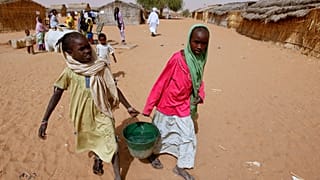Greenland
Human-caused climate change boosted Iceland and Greenland’s temperatures by several degrees during a record-setting May heat wave, raising concerns about the far-reaching implications melting Arctic ice has for weather around the world, scientists said in an analysis released Wednesday.
The Greenland ice sheet melted many times faster than normal during the heat wave, according to the analysis by World Weather Attribution.
Parts of Iceland saw temperatures more than 10°C (18 °F) above average, and the country set a record for its warmest temperature in May when Egilsstadir Airport hit 26.6°C (79.8 F) on May 15.
The findings come as global leaders put more focus on Greenland, a semi-autonomous territory of Denmark, following U.S. President Donald Trump's comments that he would like to annex the mineral-rich island.
Burning fossil fuels for electricity and transportation releases pollutants such as carbon dioxide that cause the planet to warm unnaturally fast. The Arctic is one of the fastest-warming places on Earth.
Even in today’s climate, the occurrence of such a strong heat wave in the region is relatively rare, with a 1% chance of occurring in a year, the analysis said.
But without human-caused climate change, such an event would be “basically impossible,” said Friederike Otto, associate professor of climate science at Imperial College London, one of the report’s authors.
The extreme heat was 40 times more likely compared to the pre-industrial climate.
Otto said this extreme weather event affects the world.
As the Greenland ice sheet melts, it releases massive amounts of fresh water into the salty oceans. Scientists say this could slow down the Atlantic Meridional Overturning Circulation, an ocean current that circulates water from the Gulf of Mexico across the Atlantic Ocean to Europe and then the Arctic.
Such a slowdown could disturb global climate and weather patterns.
The Greenland ice sheet and other ice covering the Arctic can influence where and when wind blows, how much water content the wind has and whether precipitation falls as rain or snow.
Most of the melting of the Greenland ice sheet happens in June, July and August. The May heat wave means there will be a longer melting season this year.
Melting ice sheets and glaciers also contribute to sea level rise that is threatening to flood coastlines globally and inundate low-lying island nations in the Pacific Ocean.





![Climate change affects Greenland [The Morning Call]](https://static.euronews.com/articles/861053/320x180_861053.jpg)



02:10
Nairobi hosts urgent UN talks on planet in crisis
01:02
First rain of autumn falls in Iran's capital after months of intense drought
00:55
Al Hoceima closes schools amid severe weather in Northern Morocco
01:10
Climate emergency: Arab region temperatures soar to new highs in 2024
Go to video
Rising lake waters cause misery for people forced to live in flooded homes in Kenya
00:55
Thailand declares state of emergency after devastating floods